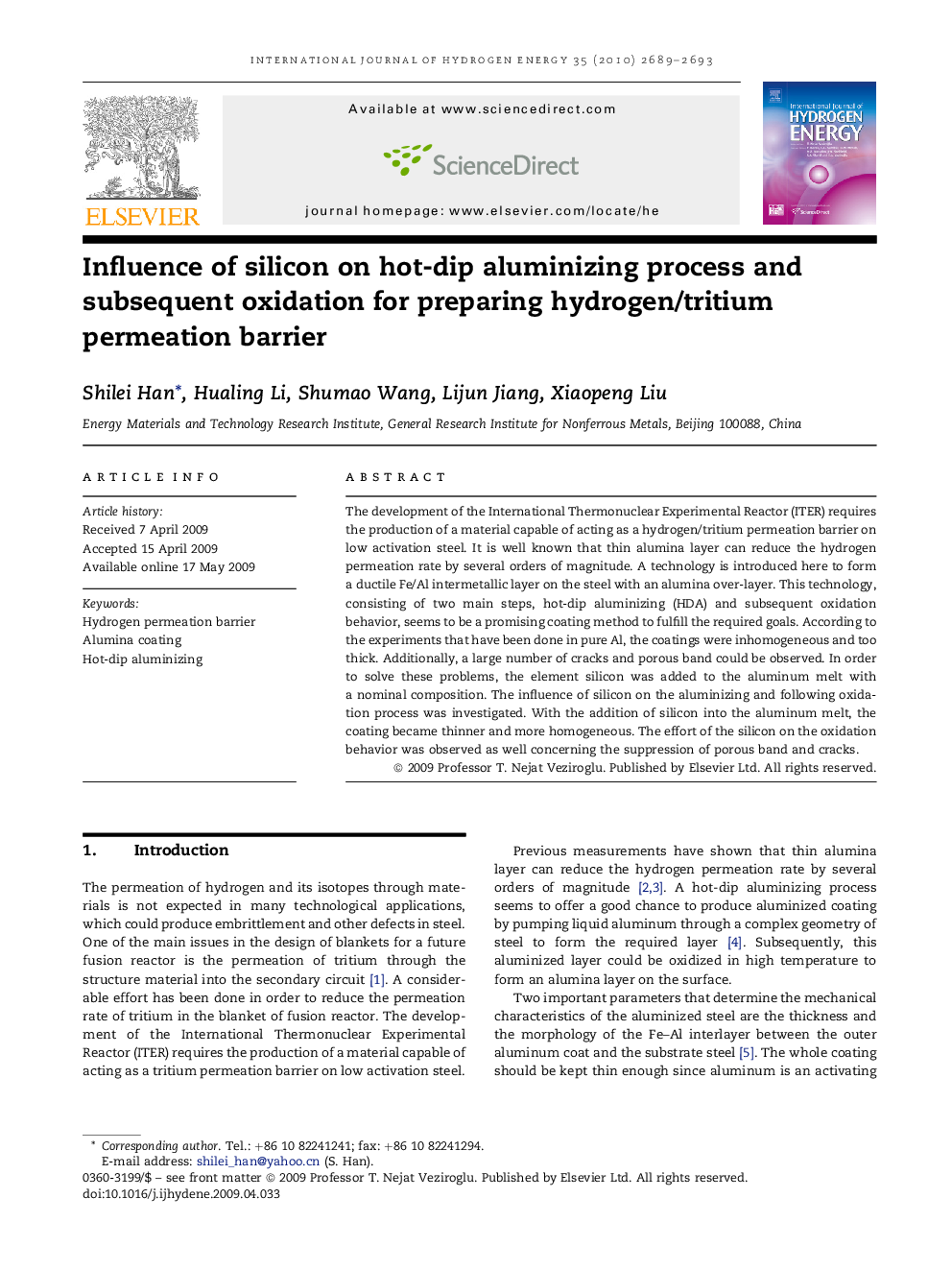| Article ID | Journal | Published Year | Pages | File Type |
|---|---|---|---|---|
| 1273238 | International Journal of Hydrogen Energy | 2010 | 5 Pages |
The development of the International Thermonuclear Experimental Reactor (ITER) requires the production of a material capable of acting as a hydrogen/tritium permeation barrier on low activation steel. It is well known that thin alumina layer can reduce the hydrogen permeation rate by several orders of magnitude. A technology is introduced here to form a ductile Fe/Al intermetallic layer on the steel with an alumina over-layer. This technology, consisting of two main steps, hot-dip aluminizing (HDA) and subsequent oxidation behavior, seems to be a promising coating method to fulfill the required goals. According to the experiments that have been done in pure Al, the coatings were inhomogeneous and too thick. Additionally, a large number of cracks and porous band could be observed. In order to solve these problems, the element silicon was added to the aluminum melt with a nominal composition. The influence of silicon on the aluminizing and following oxidation process was investigated. With the addition of silicon into the aluminum melt, the coating became thinner and more homogeneous. The effort of the silicon on the oxidation behavior was observed as well concerning the suppression of porous band and cracks.
